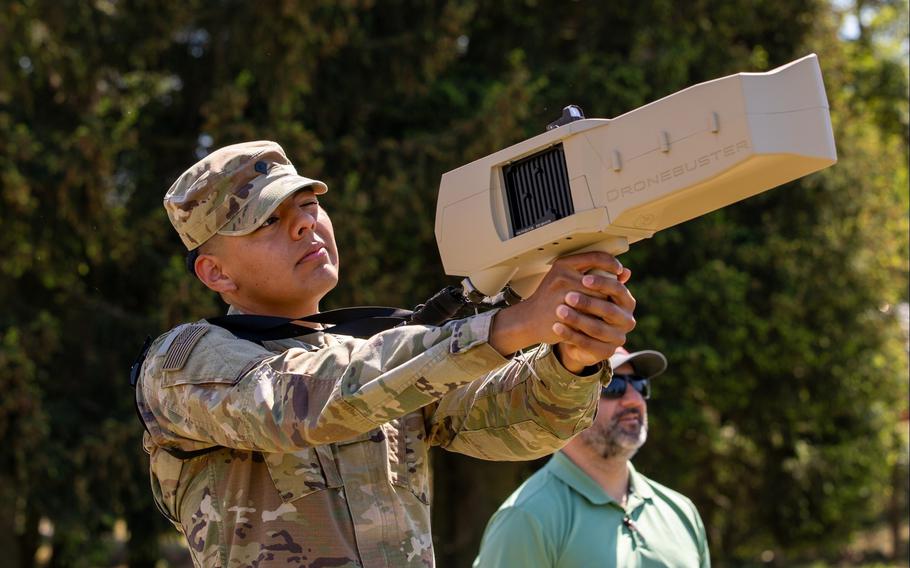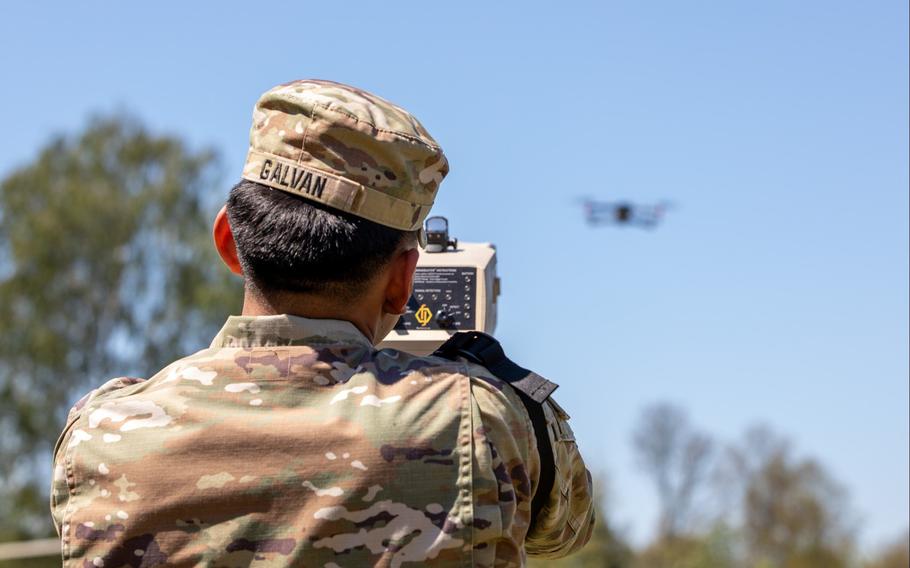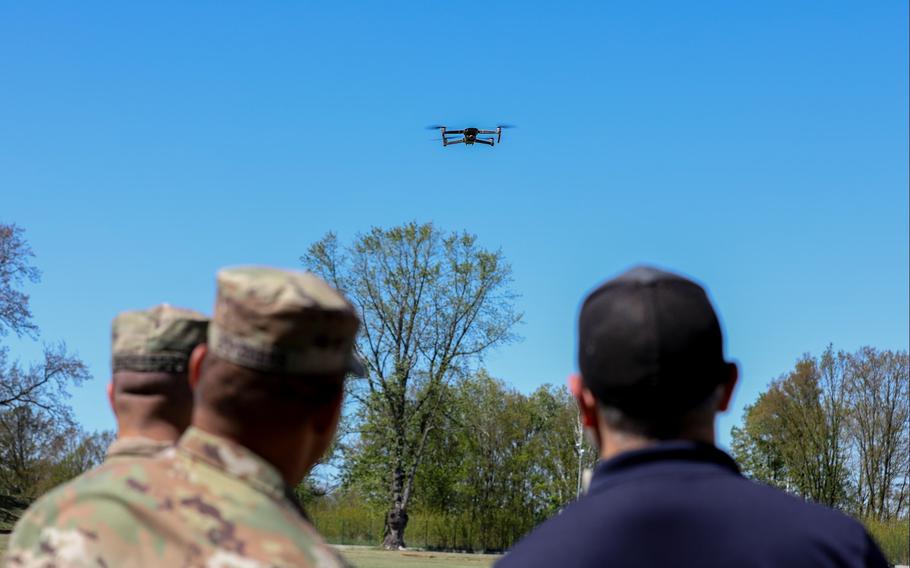
Spc. Edgar Galvan, a Texas Army National Guardsman assigned to the 1st Cavalry Division, operates a Dronebuster in Boleslawiec, Poland, on May 15, 2024. (Jasmine McCarthy/U.S. Army)
A U.S. Army unit based in Poland recently got its introduction to a drone-jamming gun, as two days of training brought the device to the territory of a NATO ally on the doorstep of the war in Ukraine.
Soldiers assigned to the 1st Cavalry Division were shown last week how to operate the Dronebuster, a lightweight, handheld gadget resembling a police radar gun that detects and downs small, commercial and recreational drones, according to an Army statement.
“The drone threat has completely changed,” Brien Conner, a retired Army first sergeant-turned-trainer, said in the statement. “We don’t want (troops) to be caught off guard.”
That threat is “now prevalent on the battlefield,” Conner added.
And the soldiers are well-placed to learn that ongoing lesson. Since Russia invaded Ukraine in February 2022, both sides have relied heavily on unmanned aerial vehicles to do surveillance and identify targets.
The training occurred May 14-15 in Boleslawiec, where the U.S. has a forward operating base called Camp Boles, about 25 miles east of the Germany border. A division spokesman did not immediately reply to a request Wednesday for more information.

A drone approaches Spc. Edgar Galvan as he operates a Dronebuster in Boleslawiec, Poland, on May 15, 2024. (Jasmine McCarthy/U.S. Army)
As part of the training, the rotational soldiers, who are from the Texas National Guard, spent mornings in the classroom followed by hands-on instruction outside, the statement said.
“It definitely feels like this training is very relevant to us right now because the enemy knows we are close by,” Spc. Edgar Galvan, a geospatial intelligence imagery analyst, said in the statement. “While it may not pertain to my job specifically, it is important to know how to use the Dronebuster because you never know when you find yourself in that situation.”
The device works by jamming radio frequencies between an unmanned aircraft and its controller.
Chief Warrant Officer 4 Benjamin Richards joined Conner in leading the training. An air and missile defense systems integrator, Richards developed a comprehensive program to teach soldiers how to operate the Dronebuster, according to the statement.
“I thought it was a good idea to reach out early on while we are still getting embedded within this region,” he said. “The Army is good at providing lessons and classes, but it’s really important for soldiers to get a piece of equipment in hand and be able to apply it as well as see how it works.”
Airmen at Prince Sultan Air Base in Saudi Arabia received similar training in June of last year.
Middle East drones are among the most advanced and deadliest in the world, analysts say, and countering them has been a priority for the U.S. military.
In the Russia-Ukraine war, the Kremlin has relied heavily on drone technology provided by Iran, according to experts.
The Dronebuster was rolled out in 2016, manufacturer Flex Force Enterprises says on its website.
The U.S. military has been beefing up its presence in Poland in recent years to counter Russia and fortify NATO’s eastern flank.
The Army established its first permanent garrison in the west-central city of Poznan in March 2023. Known as Camp Kosciuszko, the installation is responsible for 11 satellite sites and approximately 4,000 rotational personnel.

Soldiers with the 1st Cavalry Division watch as a drone approaches during Dronebuster training in Boleslawiec, Poland, on May 14, 2024. (Jasmine McCarthy/U.S. Army)